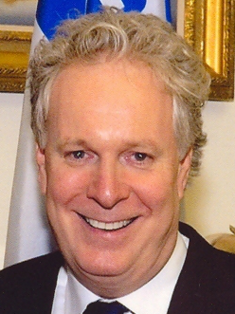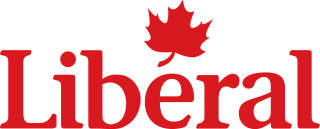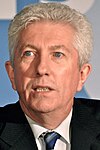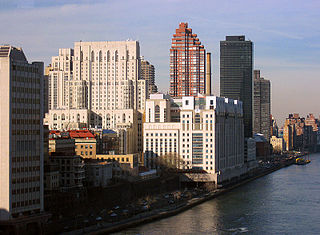| |||||||||||||||||||||||||||||||||||||||||||||||||||||||||||||||||||||||||||||||||||||||||
301 seats in the 37th Canadian Parliament 151 seats needed for a majority | |||||||||||||||||||||||||||||||||||||||||||||||||||||||||||||||||||||||||||||||||||||||||
|---|---|---|---|---|---|---|---|---|---|---|---|---|---|---|---|---|---|---|---|---|---|---|---|---|---|---|---|---|---|---|---|---|---|---|---|---|---|---|---|---|---|---|---|---|---|---|---|---|---|---|---|---|---|---|---|---|---|---|---|---|---|---|---|---|---|---|---|---|---|---|---|---|---|---|---|---|---|---|---|---|---|---|---|---|---|---|---|---|---|
| Turnout | 64.1% [1] ( | ||||||||||||||||||||||||||||||||||||||||||||||||||||||||||||||||||||||||||||||||||||||||
| |||||||||||||||||||||||||||||||||||||||||||||||||||||||||||||||||||||||||||||||||||||||||
 Popular vote by province, with graphs indicating the number of seats won. As this is an FPTP election, seat totals are not determined by popular vote by province but instead via results by each riding. | |||||||||||||||||||||||||||||||||||||||||||||||||||||||||||||||||||||||||||||||||||||||||
| |||||||||||||||||||||||||||||||||||||||||||||||||||||||||||||||||||||||||||||||||||||||||

The 2000 Canadian federal election was held on November 27, 2000, to elect 301 Members of Parliament of the House of Commons of Canada of the 37th Parliament of Canada.

The House of Commons of Canada is a component of the Parliament of Canada, along with the Sovereign and the Senate. The House of Commons currently meets in a temporary Commons chamber in the West Block of the parliament buildings on Parliament Hill in Ottawa, while the Centre Block, which houses the traditional Commons chamber, undergoes a ten-year renovation.

The 37th Canadian Parliament was in session from January 29, 2001, until May 23, 2004. The membership was set by the 2000 federal election on November 27, 2000, and it changed only somewhat due to resignations and by-elections until it was dissolved prior to the 2004 election.

Canada is a country in the northern part of North America. Its ten provinces and three territories extend from the Atlantic to the Pacific and northward into the Arctic Ocean, covering 9.98 million square kilometres, making it the world's second-largest country by total area. Canada's southern border with the United States is the world's longest bi-national land border. Its capital is Ottawa, and its three largest metropolitan areas are Toronto, Montreal, and Vancouver. As a whole, Canada is sparsely populated, the majority of its land area being dominated by forest and tundra. Consequently, its population is highly urbanized, with over 80 percent of its inhabitants concentrated in large and medium-sized cities, many near the southern border. Canada's climate varies widely across its vast area, ranging from arctic weather in the north, to hot summers in the southern regions, with four distinct seasons.
Contents
- Campaign
- Political parties
- Liberal Party
- Canadian Alliance
- Bloc Québécois
- New Democratic Party
- Progressive Conservative Party
- Results
- Vote and seat summaries
- Results by province
- Seat by seat results
- Notes
- 10 closest ridings
- See also
- References
- External links
Since the previous election of 1997, small-"c" conservatives had begun attempts to merge the Reform Party of Canada and Progressive Conservative Party of Canada as part of the United Alternative agenda. During that time, Jean Charest stepped down as leader of the Progressive Conservatives and former Prime Minister Joe Clark took over the party and opposed any union with the Reform Party. In spring of 2000, the Reform Party became the Canadian Alliance, a political party dedicated to uniting right-wing conservatives together into one party. Former Reform Party leader Preston Manning lost in a leadership race to Stockwell Day who became leader of the new Canadian Alliance party.

The Reform Party of Canada was a right-wing populist federal political party in Canada that existed from 1987 to 2000. Reform was founded as a Western Canada-based protest movement and eventually became a populist conservative party, with strong social conservative elements. It was initially motivated by the perceived need for democratic reforms and by profound Western Canadian discontent with the Progressive Conservative (PC) federal government of Brian Mulroney.

The Progressive Conservative Party of Canada (PC) was a federal political party in Canada.

Jean Charest, is a Quebec politician. He was the 29th premier of Quebec, from 2003 to 2012; the deputy prime minister of Canada from June 25, 1993, until November 4, 1993; the leader of the federal Progressive Conservative Party of Canada from 1993 to 1998; and the leader of the Quebec Liberal Party from 1998 to 2012. He became Premier after winning the 2003 election; after he lost the 2012 election he announced that he would be resigning as Quebec Liberal Leader and leaving politics. Charest sits as an advisor to Canada's Ecofiscal Commission.
The federal government called an early election after being in office for just over three years (with a maximum allowed mandate of five years). The governing Liberal Party of Canada won a third consecutive majority government, winning more seats than the previous election. The Canadian Alliance made some minor gains, such as electing two Members of Parliament (MPs) from the province of Ontario. The Bloc Québécois, New Democratic Party (Canada) and the PC Party all lost seats. The 1993 and 1997 federal elections involved the issue of vote-splitting, between the Reform Party and the PC Party; this would repeated with the Alliance Party and the PC Party movements, which in Canada's First Past the Post system allowed many Liberal candidates with a plurality of votes to win.
A snap election is an election called earlier than expected.

The Liberal Party of Canada is the oldest and longest-serving governing political party in Canada. The Liberals form the current government, elected in 2015. The party has dominated federal politics for much of Canada's history, holding power for almost 69 years in the 20th century—more than any other party in a developed country—and as a result, it is sometimes referred to as Canada's "natural governing party".
A majority government refers to one or multiple governing parties that hold an absolute majority of seats in legislature. This is as opposed to a minority government, where the largest party in a legislature only has a plurality of seats.
This was the last election until 2011 which resulted in a majority government. It was the only election contested by the Canadian Alliance and the last by the Progressive Conservatives. This was also the first election in which Nunavut was its own separate territory (before, it was part of the Northwest Territories).

Nunavut is the newest, largest, and most northerly territory of Canada. It was separated officially from the Northwest Territories on April 1, 1999, via the Nunavut Act and the Nunavut Land Claims Agreement Act, though the boundaries had been drawn in 1993. The creation of Nunavut resulted in the first major change to Canada's political map since the incorporation of the province of Newfoundland in 1949.

The Northwest Territories is a federal territory of Canada. At a land area of approximately 1,144,000 km2 (442,000 sq mi) and a 2016 census population of 41,786, it is the second-largest and the most populous of the three territories in Northern Canada. Its estimated population as of 2018 is 44,445. Yellowknife became the territorial capital in 1967, following recommendations by the Carrothers Commission.



















